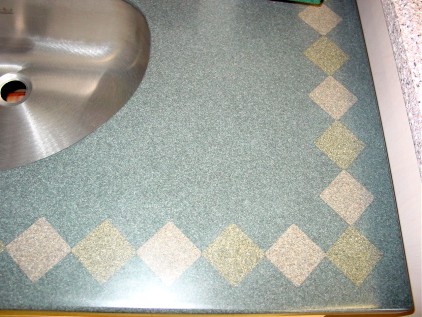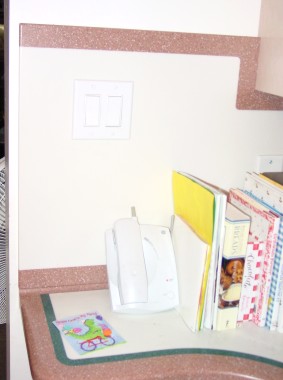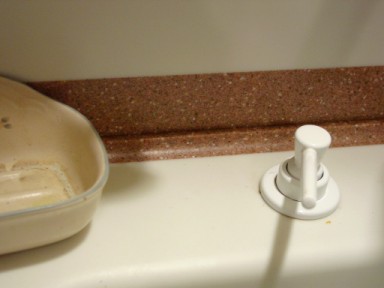

The double border on the deck followed the curve that was designed into the top. CNC technology made this only a little more difficult than if it were straight.

Solid inlays: Also known as intartia, while one of the more beautiful fabrication techniques in solid surface, is actually not too different from standard fabrication. The kind of inlay, whether or not it is open on one side or edge, and the over-all shape, will have different approaches, but it is still fitting pieces, gluing and finishing.
 |
The inlay in the image on the left was made from three different solid surface colors (always try to use the same brand when doing the designs). These individual ppieces were not inlayed into a solid top piece. The inside of the deck was cut to the diamond shape, the pieces inlayed were individually cut and sized, then the outside piece was applied. |
 |
The wall sheets have a single border, the deck has a double
border in this shot of a side top in a kitchen. Because the cabinets ends
before the top, and the customer wanted a full height wall sheet, the
decision was made to jog the sheet up to help accent the difference. The
outlet was also near where the wall sheet would end, so the extra height
helped here also. By giving the wall sheet a border, we also accented an
area where one might normally think to downplay. The double border on the deck followed the curve that was designed into the top. CNC technology made this only a little more difficult than if it were straight. |
 |
A closer look at the sink area in the above-mentioned kitchen, shows the incorporation of the low-cove (or tile cove) inlay in the border color, joining the wall sheet with the same border. the cove piece allows any standing water to be kept away from any caulked joint, where water may eventually seep through and potentially damage the walls. |